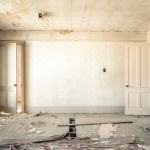Restoring an old house can be a rewarding journey, filled with the excitement of bringing a piece of history back to life. It involves careful planning, a bit of creativity, and a deep appreciation for the past. Whether you are looking to breathe new life into a Victorian beauty or update a mid-century modern gem, the process of fixing up an old house can transform a dilapidated structure into a cozy, stylish home. Here’s how to approach the renovation with both reverence for its original character and a vision for its future.
Structural Integrity
The bones of the house are its most critical components. Focus on making any necessary structural repairs to ensure the building is sound. This may involve reinforcing weak framing, fixing or replacing old joists, or addressing any termite damage. Ensuring the house is structurally sound is crucial before proceeding with more cosmetic updates and repairs.
Updating The Roof
The roof is one of the most vital components of a house, protecting everything under it from the elements. If the existing roof is old or damaged, replacing it is essential to prevent further damage to the structure. Opting for durable roofing materials that complement the architectural style of the house can also significantly enhance its curb appeal and overall value.
Electrical And Plumbing Updates
Older homes often come with outdated electrical wiring and plumbing systems that can be inefficient and unsafe. Updating these systems is crucial for the safety of the inhabitants and the functionality of the home. Rewiring the house and replacing old plumbing will not only bring your home up to code but also improve its efficiency and usability.
Lighting And Windows
Lighting and windows play a significant role in transforming the atmosphere of an old home. Preserve or restore original windows where possible to maintain the home’s historical integrity. For lighting, consider fixtures that reflect the home’s era while providing modern efficiency. Strategic lighting can highlight architectural details and create a warm, inviting ambiance.
Floors And Walls
Refinishing existing hardwood floors can reveal hidden beauty and instantly uplift the entire home. If the original wood is too damaged, consider replacing it with new flooring that matches the historical period of the house. For the walls, removing layers of old wallpaper or paint might uncover original plaster or unique moldings that add character and charm to your space.
Aesthetic Touches
Choosing period-appropriate fixtures, hardware, and finishes can accentuate the unique features of an old house. Research the home’s era to make informed decisions about decorative elements that enhance its historical accuracy and appeal. This attention to detail will make your home not only a reflection of the past but also a celebration of timeless design.
While maintaining the essence of the historical architecture, integrating modern conveniences and design elements is essential for contemporary living. This could include updating the kitchen and bathrooms, adding insulation, or installing energy-efficient appliances. The key is to blend these modernizations seamlessly with the classic features to create a functional, comfortable home that respects its heritage.
Restoring an old house is much more than a renovation project; it is a labor of love that requires vision, patience, and a deep respect for the past. By carefully planning each step and making thoughtful choices, you can turn a neglected house into a stunning home that stands as a testament to both its history and your hard work.







